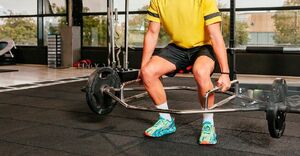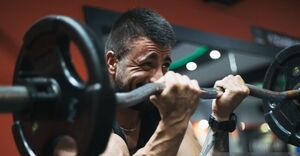
Joint Safety and Chest Fly Machines: Tips for Injury Prevention
Looking to improve your chest muscles with chest fly machines, but worried about the risk of injury?
We explore the importance of joint safety and common joint injuries to watch out for.
Discover the benefits of using chest fly machines, as well as the potential risks.
We provide valuable tips on preventing injuries while using these machines, ensuring a safe and effective workout experience.
Let’s dive in!
Why is Joint Safety Important?
Joint safety is paramount in any fitness routine as it plays a crucial role in injury prevention and overall well-being for fitness enthusiasts.
Ensuring joint safety is not only about preventing immediate injuries but also about maintaining long-term joint health. Incorporating proper warm-up and cool-down routines, using correct form during exercises, and being mindful of any warning signs of discomfort are essential components of injury prevention strategies.
By prioritizing joint safety, individuals can reduce the risk of developing muscular imbalances, which can lead to compensatory movements and potential injuries. Ultimately, maintaining proper joint health contributes significantly to achieving overall fitness goals and ensuring a sustainable workout regimen.
What are the Most Common Joint Injuries?
Understanding the most common joint injuries is crucial for implementing effective injury prevention strategies and proper injury management in fitness routines.
By being aware of common joint injuries such as sprains, strains, dislocations, and tendonitis, individuals can take proactive steps to safeguard their joints during physical activities. Sprains occur when ligaments are stretched or torn, while strains affect muscles or tendons. Dislocations involve the displacement of bones in a joint, leading to pain and instability. Tendonitis, on the other hand, is the inflammation of tendons due to repetitive motion or overuse.
Effective injury prevention involves warming up, using proper form, incorporating rest days, and seeking medical attention when needed.
Sprains
Sprains are common joint injuries that can significantly impact physical health and fitness routines if not treated promptly and effectively.
Initially caused by sudden twists or falls, sprains occur when ligaments are stretched or torn, leading to pain, swelling, and difficulty moving the affected joint. Common symptoms of a sprain include bruising, tenderness, and instability in the joint.
Treatment typically involves rest, ice, compression, and elevation (RICE method), along with pain management measures. Physical therapy and exercises are crucial for rehabilitation, focusing on regaining strength and flexibility to prevent future injuries and promote overall physical well-being.
Strains
Muscle strains can hinder strength and conditioning progress, underscoring the importance of proper mechanics and injury prevention strategies in fitness training.
By focusing on proper muscle activation and engaging in regular strength conditioning, individuals can significantly reduce the risk of strains during workouts. Understanding the importance of joint safety plays a key role in optimizing muscle health and overall fitness levels. Incorporating exercises that target muscle imbalances and weaknesses can help in maintaining proper alignment and preventing injuries. It is essential to listen to your body and not push it beyond its limits, as overexertion can lead to muscle strains and setbacks in your fitness journey.
Dislocations
Dislocations pose significant risks to joint stability and strength gains, necessitating attention to proper resistance training techniques and injury prevention measures.
When a joint is dislocated, the ligaments, tendons, and surrounding structures that support it can become weakened or damaged, leading to compromised stability and reduced strength. This makes it crucial for individuals engaging in resistance training to focus on maintaining proper form and alignment to prevent excessive stress on the joints.
Incorporating exercises that improve overall stability, such as balance training and core strengthening, can help reduce the risk of joint dislocations while also enhancing strength gains. By prioritizing injury prevention strategies and emphasizing correct technique, individuals can effectively mitigate the potential negative impact of joint dislocations on their training progress.
Tendonitis
Tendonitis can impact range of motion and flexibility, emphasizing the need for proper breathing techniques and injury prevention strategies to alleviate symptoms and enhance joint health.
By incorporating proper breathing techniques during exercises, individuals with tendonitis can help reduce tension in the affected tendons and improve circulation to the injured area.
Engaging in specific flexibility training tailored to the affected joints can gradually restore and enhance flexibility, contributing to better overall joint function.
Alongside flexibility training, implementing injury prevention measures such as proper warm-up routines, adequate rest periods, and gradual progression in physical activity can play a crucial role in managing and preventing the recurrence of tendonitis.
Taking a proactive approach towards managing tendonitis through these strategies can lead to improved flexibility, increased range of motion, and enhanced joint health in the long run.
What are Chest Fly Machines?
Chest Fly Machines are specialized fitness equipment designed to target the chest muscles through controlled movements and proper technique for optimal muscle activation.
These machines typically feature adjustable arms that move in an arc-like motion, allowing users to mimic the fly exercise with added resistance. It is crucial to maintain the correct alignment and form while using Chest Fly Machines to ensure that the target muscles are properly engaged without straining other body parts. By using the equipment correctly, individuals can effectively strengthen their chest muscles and improve their overall upper body strength. Proper usage of Chest Fly Machines also helps in preventing injuries and maximizing the fitness benefits of the exercise.
Types of Chest Fly Machines
Various types of Chest Fly Machines are available to cater to different fitness needs, offering exercise variations and muscle-building opportunities for diverse workout routines.
- These machines come in different designs such as the traditional pec deck machine, cable fly machine, and plate-loaded chest fly equipment.
- The pec deck machine allows for a smooth, controlled movement targeting the chest muscles effectively.
- On the other hand, the cable fly machine provides continuous resistance throughout the exercise, engaging stabilizing muscles for improved strength and balance.
- Plate-loaded chest fly equipment offers adjustable resistance levels, making it suitable for both beginners and advanced users looking to customize their workout intensity.
How to Use a Chest Fly Machine Safely?
Using a Chest Fly Machine safely requires attention to proper technique, safety guidelines, and gradual progression in training intensity to ensure effective fitness progress and injury risk reduction.
To maintain correct form on the Chest Fly Machine, focus on keeping your back flat against the seat and engaging your core throughout the movement. Remember to adjust the machine settings to match your strength level, starting with lighter weights and gradually increasing resistance as you build muscle. Tracking your progress by noting the amount of weight lifted, sets, and repetitions will help you monitor improvements and make adjustments to your workout routine.
Always prioritize safety by starting with a proper warm-up and cool-down routine, and don’t forget to listen to your body for any signs of fatigue or strain.
What are the Benefits of Using Chest Fly Machines?
Utilizing Chest Fly Machines in workouts offers numerous benefits, including enhanced muscle activation, improved range of motion, and increased strength and conditioning for overall fitness goals.
These machines specifically target the pectoral muscles, helping to build chest strength and definition. By incorporating Chest Fly Machines into your routine, you can effectively engage your chest muscles with controlled movements, leading to greater muscle recruitment and growth. Using these machines can help improve your shoulder joint flexibility and stability, contributing to more efficient and safer upper body exercises. The ability to adjust resistance levels allows for progressive overload, aiding in strength development and muscle endurance. This makes Chest Fly Machines a valuable asset in achieving your desired fitness results.
Strengthens Chest Muscles
One of the key benefits of using Chest Fly Machines is the targeted strengthening of chest muscles, promoting strength gains, balanced workouts, and optimal body positioning.
By focusing on the pectoral muscles during chest fly exercises, individuals can effectively develop muscle strength in the chest region. This targeted approach not only aids in improving the overall appearance of the chest but also enhances functional strength for daily activities. Proper body positioning while using a Chest Fly Machine is crucial to ensure that the chest muscles are effectively engaged and that other muscle groups do not compensate for the movement. Incorporating chest fly exercises into a well-rounded workout routine helps maintain muscle balance, preventing overdevelopment of specific muscle groups and supporting overall fitness goals.
Improves Posture
Using Chest Fly Machines can enhance posture by promoting body awareness, flexibility training, and the adoption of injury prevention strategies to maintain musculoskeletal health.
When individuals engage in regular Chest Fly Machine exercises, they become more attuned to their body alignment and muscle engagement, which translates to improved posture over time.
Through the controlled movements of the machine, users develop a deeper understanding of how different muscles work together, leading to better overall body awareness.
The dynamic range of motion offered by these machines contributes to enhanced flexibility, allowing for increased joint mobility and reduced stiffness.
By incorporating these exercises into a comprehensive fitness routine, individuals can proactively prevent injuries and achieve optimal musculoskeletal health.
Targets Multiple Muscle Groups
Chest Fly Machines are effective in targeting multiple muscle groups simultaneously, promoting muscle activation and performance enhancement through functional training principles.
This type of exercise equipment is designed to engage not only the chest muscles but also the shoulders, triceps, and stabilizer muscles, leading to a more comprehensive workout. By incorporating Chest Fly Machines into your routine, you can improve upper body strength and endurance while promoting a balanced muscle development. The controlled movement of the machine allows for steady resistance, aiding in muscle activation throughout the entire range of motion.
The functional aspect of these machines mimics natural arm movements, translating to practical benefits in everyday activities.
What are the Risks of Using Chest Fly Machines?
While beneficial, using Chest Fly Machines carries specific risks such as shoulder injuries, rotator cuff tears, and pectoral muscle strains that necessitate precautionary measures and proper usage techniques.
These risks are often attributed to improper form or exceeding one’s physical limits during workouts. To minimize the likelihood of shoulder injuries, individuals should ensure that their shoulders are properly stabilized and not excessively strained. Incorporating regular shoulder strengthening exercises into one’s fitness routine can help improve stability and reduce the risk of tears. It is crucial to start with lighter weights and gradually increase resistance to avoid sudden strain on the muscles. Practicing controlled movements and consulting a fitness professional for guidance on correct positioning is vital to prevent overexertion and potential injuries.
Shoulder Injuries
Shoulder injuries resulting from Chest Fly Machine usage can impact training programs and strength and conditioning goals, necessitating a focus on injury prevention strategies.
One of the key implications of such injuries is the potential setback they can cause in an individual’s fitness journey. The shoulders play a crucial role in a wide range of upper body exercises, and any injury in this area can hinder overall progress.
To combat this, individuals should consider incorporating alternative training programs that reduce strain on the shoulders while still targeting the chest effectively. Focusing on proper form and technique during workouts is essential to prevent overuse or incorrect movement patterns that may lead to injury.
By prioritizing shoulder health and implementing a well-rounded fitness programming, individuals can mitigate the risks associated with Chest Fly Machine usage and optimize their strength and conditioning regimens.
Rotator Cuff Tears
Rotator cuff tears attributed to Chest Fly Machine use require specific injury prevention strategies, recovery approaches, and adjustments to fitness progress for optimal rehabilitation.
Such tears can significantly impact shoulder mobility and strength, making it crucial to focus on strengthening surrounding muscles and improving stability. Injury prevention techniques may include proper warm-up exercises, maintaining correct form during workouts, and avoiding excessive weights.
During recovery, a gradual increase in range of motion and resistance is essential to prevent re-injury. Modifications to fitness progress could involve incorporating resistance bands, bodyweight exercises, and functional movement training to continue improving shoulder function while allowing the rotator cuff to heal efficiently.
Pectoral Muscle Strains
Pectoral muscle strains from Chest Fly Machine exercises can highlight the importance of addressing muscular imbalances, enhancing flexibility, and conditioning for effective injury management, and prevention.
These strains often occur due to overuse or improper form during chest fly exercises, emphasizing the need for a holistic approach to fitness.
When the pectoral muscles are consistently overworked without proper attention to other muscle groups, it can lead to imbalances that increase the risk of strain. In addition to conditioning the chest muscles, incorporating exercises that target the back and shoulders can help alleviate this imbalance and reduce strain risks.
Maintaining adequate flexibility through regular stretching routines is crucial for preventing muscle tightness and potential injuries during workouts.
How to Prevent Injuries while Using Chest Fly Machines?
Preventing injuries during Chest Fly Machine workouts requires adherence to proper form, gradual weight and rep increments, and attentive monitoring of body signals to ensure injury-free workouts.
- To maintain proper form, ensure your back is flat against the bench, shoulders relaxed, and elbows slightly bent throughout the exercise.
- It’s crucial to start with a manageable weight and gradually increase it as your strength improves.
Monitor your body’s response during each repetition, adjusting the weight or the number of reps if you experience any pain or discomfort. Taking breaks between sets and incorporating flexibility and mobility exercises into your routine can further decrease the risk of injuries and support overall muscle health.
Warm up and Stretch
Engaging in a proper warm-up and cool down routine before and after using Chest Fly Machines is essential for optimizing body positioning, fitness progress, and post-workout recovery strategies.
During a warm-up session, focusing on dynamic stretches and light cardio can increase blood flow, loosen up muscles, and prepare the body for the intense movement involved in Chest Fly Machine exercises. Proper body positioning is crucial to maximize the benefits of this workout; maintaining a stable and balanced posture while executing each repetition helps target the chest muscles effectively. Cool-down activities, such as static stretching and low-intensity exercises, aid in preventing muscle soreness and promoting faster recovery. Tracking your fitness progress over time can help you assess improvements and adjust your workout routine accordingly.
Use Proper Form
Maintaining proper form during Chest Fly Machine exercises is crucial for optimizing muscle engagement, injury prevention, and correct alignment to avoid strain and enhance flexibility training benefits.
Focusing on form precision in Chest Fly Machine workouts ensures that the targeted chest muscles are effectively activated, leading to more gains in strength and muscle growth. By executing each repetition with proper alignment, you reduce the risk of injuries that can derail your fitness progress. The correct form also contributes to better posture, translating to improved body mechanics during daily activities.
Consistent attention to form in your Chest Fly Machine routine enhances the overall effectiveness of your flexibility training regimen.
Listen to Your Body
Listening to your body’s signals during Chest Fly Machine sessions fosters body awareness, enabling adjustments in body positioning, exercise techniques, and muscle building strategies for optimal results.
By paying attention to how your muscles engage and respond during each repetition, you can ensure that you are targeting the correct muscles effectively. Proper body alignment and form are key elements in maximizing the benefits of Chest Fly Machine workouts. Focusing on maintaining a strong mind-muscle connection will help you engage the targeted muscle groups fully, promoting muscle growth and strength development. Remember to control the movement throughout the entire range of motion, feeling the stretch and contraction in your chest muscles with each repetition.
Gradually Increase Weight and Reps
Progressively increasing weight and repetitions in Chest Fly Machine routines is key to advancing resistance training, tracking fitness progress, and achieving desired strength gains effectively.
By gradually adding weight and increasing the number of reps during your Chest Fly Machine workouts, you not only challenge your muscles to adapt and grow but also set a clear pathway for your strength-building journey. This methodical approach to resistance training allows you to monitor your fitness progress closely, ensuring that you are continuously pushing your boundaries and pushing towards your goals. With each incremental increase in weight and reps, you are optimizing the effectiveness of your strength gains and setting yourself up for long-term success in your fitness endeavors.




No Comments